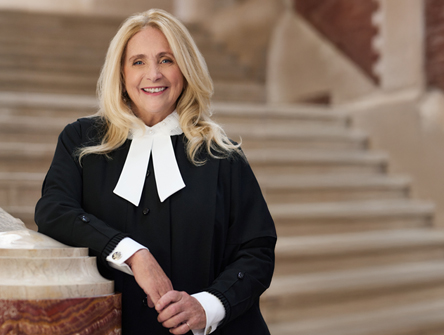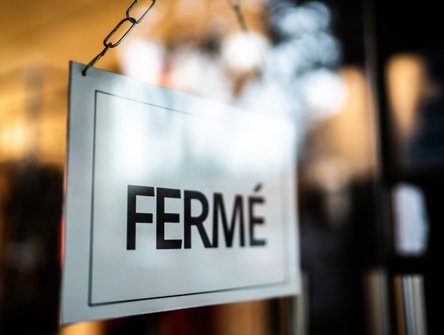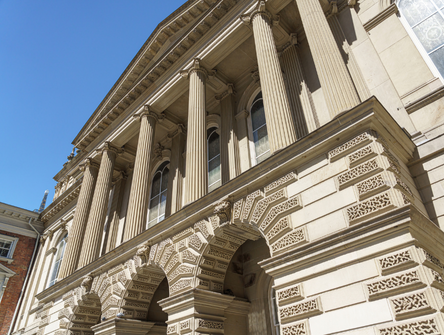Our path through a new legal landscape
Why we need a new approach to bringing Indigenous voices into the legal profession.
.jpg?ext=.jpg)
The legal landscape has shifted monumentally over the past 30 years and will continue to do so now that Bill C-15 has received Royal Assent. The implementation of the United Nations Declaration on the Rights of Indigenous Peoples, or UNDRIP, at the federal level, means that Indigenous Nations now have additional tools in their arsenal to advance their law-making jurisdictions. Academics and decision-makers must now think differently about recruiting people into the legal profession and elevating them as decision-makers.
At present, all law schools across the country have Indigenous-specific admission requirements for Indigenous applicants, but the process for each school lacks any clear acceptance guidelines.
One problem is that admissions committees (in general) have not always understood the lived experiences of Indigenous applicants. We can only guess that it was because people involved did not have the skills to unpack colonialism, systemic racism and discrimination in Canada.
There's been progress, but law school admissions committees still need more Indigenous participants at the table with voting privileges. That requires hiring more Indigenous academics. This process should also include Indigenous practitioners interested in expanding the profession to include voices and elders from a variety of Nations who can offer traditional perspectives.
We need to design programs around the recruitment of Indigenous students into work environments. The Indigenous Initiatives Liaison at the Law Society of Alberta offers firms and organizations a program through which they can hire 1L and 2L Indigenous students over the summer. Firms must first follow training on how to use a culturally competent lens when vetting resumes, interviewing candidates and onboarding the Indigenous student. They can also learn about culturally safe environments where Indigenous students can learn requisite legal skills over the summer and thrive and not worry about educating firms on Indigenous cultures. This year the program has had the highest number of Indigenous students hired with nine students. Twenty-three firms participated.
Also working to advancing Indigenous voices in the legal profession is the Law Societies Equity Network (LSEN), which is the broader equity committee made up of individuals who work across each law society, (as well as on the Federation level) sharing knowledge and information on their respective roles and initiatives across the country. To its credit, the Law Society of Alberta has created the only position across the nation whose specific goal is to work with key stakeholders and develop programs and initiatives to adavance the process of truth and reconciliation, particularly surrounding access to justice for Indigenous people and cultural comeptency for lawyers.
Canada’s recognition of its long-established status as a multi-juridical nation has been incremental. Indigenous Peoples have achieved our rights, not through the benevolence of Canadian governments, but through the tireless advocacy of Indigenous Peoples and legal warriors who have come before us and will continue long after we have gone on our spirit walk. We are now on the horizon of Indigenous legal jurisdictions working alongside other legal systems in Canada.
While Canada and Alberta have made many great strides in recent years by appointing Indigenous people as judges, more needs to be done if Indigenous laws are to become part of the fabric of the country.
Canada and Alberta have made many great strides in recent years by appointing Indigenous peoples as judges. But in Alberta, there are only three Indigenous judges in the Provincial Court and two Indigenous judges on Queen’s Bench (one of which is Arcand-Paul’s aunt), out of 136 judges and 75 justices, respectively. This counts as 2.2% of the Provincial Court and 2.6% of Queen’s Bench in a province where Indigenous Peoples roughly make up 6.5% of the population, according to the 2016 census.
Naturally our communities celebrate these appointments, but this is the bare minimum, and our profession will need to appoint more judges and justices to atone for the centuries of mistreatment. This includes Canada’s top bench, which remains colonial and very white (although the most recent appointment is a start to changing that). With reforms to our legal landscape imminent, a permanent spot on the Supreme Court of Canada will be necessary.
Although Canada is made up of hundreds of Nations, each with their unique laws, customs and traditions, we all share a common goal – to leave this world a little better for the next generation.
The status quo means accepting colonial legislation, Indigenous children being taken to court over basic human rights or allowing jurists to perpetuate colonial violence over Indigenous legal mechanisms. On the other hand, our society will benefit from the inclusion of more Indigenous voices in law schools, firms, boards, committees and the judiciary. We also predict that the Supreme Court of Canada will have an Indigenous jurist, as true justice will require our inclusion, eventually. Those who resist welcoming Indigenous voices in their ranks will fall behind and become long forgotten relics, not unlike the statues of those historical figures who perpetuated colonialism, including but not limited to the abhorrent residential school system.
History will continue to look unfavourably toward the ongoing denial, or even silencing, of Indigenous Peoples’ voices in these spaces, and it is up to each of us individually to choose what path we will take.


